How To Melt Ice Without Damaging Concrete?
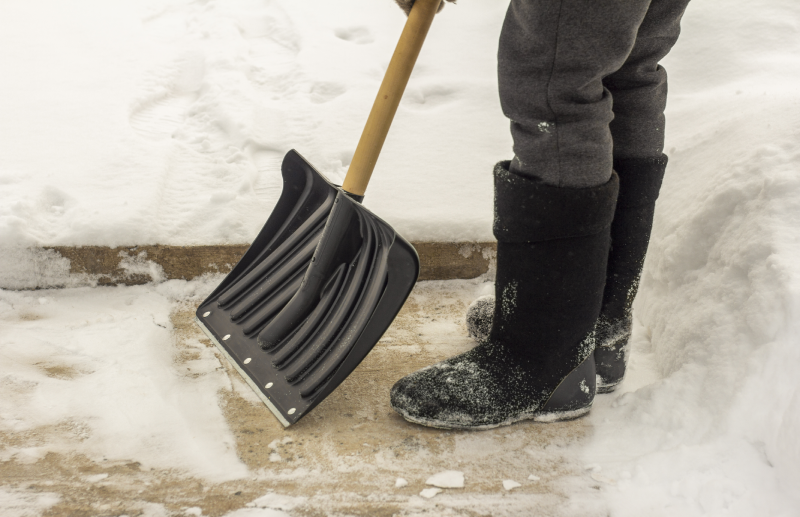
During the winter months, ice can freeze on the concrete outside our homes creating a dangerously slick surface. This slippery ice can cause slips and falls to occur. Many people choose to apply rock salt to their concrete steps or pavement. However, these are not safe salt for concrete and can cause concrete to become damaged over time. Using salt to melt ice regularly pits the cement used for our walkways, steps, and other concreted areas. Once the cement pits, it will eventually crack or cause potholes on your surface.
Also, if salt comes in contact with metal, such as the frames on your patio furniture, it can cause corrosion and rust. Fortunately, there is an ice melt for concrete that is a safe alternative to using salt that you can try to stay safe this winter.
Let us explore the ways on how to melt ice without damaging the concrete.
- 5 Tips on How to Melt Ice on Concrete
- Best Ice Melt for Concrete
- How to Melt Ice on the Sidewalk without Salt?
- Chloride Based Ice Melt and its Disadvantages
- Other Ice Melt Products
5 Tips on How to Melt Ice on Concrete
Concrete Safe Ice Melt
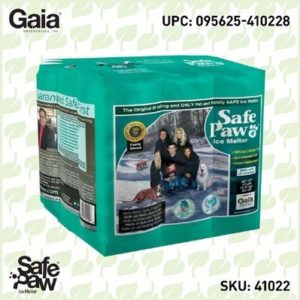
Safe Paw
The Original and the #1 Pet and Child Safe Ice Melt for over 20 years. Guaranteed environmentally safe – will not harm waterways and sensitive wetlands.
How to Melt Ice on The Sidewalk Without Salt?
The best way to remove ice and snow from your steps or driveway is to use a shovel. However, many times shovelling the snow just isn’t enough and an ice layer can be left behind. Therefore you will need to use other methods to break up, melt or gain traction on the ice. Here are a few ice-removal alternatives to using salt that will not cause damage to your concrete surfaces.
Safe Paw
Safe Paw is one of the few ice melt products on the market that can be used around pets and children, and it will not cause harm to your concrete walkways. It has even been considered the best ice melt for concrete.
It’s a one-of-a-kind compound with a time-released action because it’s completely salt-free. It has a non-corrosive structure with a crystalline amide core that is injected with glycols. Unlike rock salt and other salt-based ice melting products, which include potassium chloride or sodium chloride and can only melt ice to a temperature of 24 degrees, it can melt ice to a temperature of 2 degrees below zero.
Salt-based treatments take longer to function, and the crystals often linger on the surface of snow and ice for long periods before penetrating, posing a risk to pets and children if they eat the contents.
Furthermore, the salt residue left behind can harm concrete, pavers, lawns, timber, and decks. It can also be tracked indoors, causing damage to carpets and hardwood surfaces. Safe Paw is one of a kind because, unlike other ice melts salt on the market, it doesn’t include any salt.
It is readily available in hardware stores, grocery chains, pet supply stores, and veterinarian offices in all cold-weather states because it is a top-selling product. You can be confident that you are not hurting your concrete, family, pets, or the environment while using this simple tool to remove all of your winter ice worries.
Get ready for winter with the ONLY Pet Safe Ice Melt you can trust
Snowmelt Mats
These mats come with a heating coil. They are used to heat snowy or icy surfaces. They do require an active power source, however, they don’t pollute the environment and can be reused.
The systems are priced between $5,000 and $10,000, which means you have to spend thousands of dollars for them. Hydronic systems are typically more expensive to install. Due to winter utility bills, you will incur charges in the operation of the snow removal system. The price will vary depending on the type of heated pavement used, the square footage, the temperature, and the amount of snow that has accumulated. If the system fails, the entire driveway may have to be torn to make repairs.
Beet Juice
The sugar molecules in beet juice have the same action as the salt in road salt in preventing the development of ice crystals. Many municipalities have taken use of this trait by combining road salt and beet juice to reduce the quantity of salt required to deice roads.
When beet juice enters streams, its sugar attracts undesirable microbes, which consume the oxygen that many aquatic organisms require to exist. It may leave a light brown or crimson stain behind. As a result, every time you use it on your walkway or driveway, you’ll have to do more cleaning.
Urea
Commonly employed as a fertilizer, this liquid is second only to salt in popularity as a deicer. When temperatures dip below 25 degrees Fahrenheit, urea loses its potency, making it a less appropriate alternative for severely cold days.
While urea is less corrosive than rock salt, its significant nitrogen content makes it hazardous to the environment. High enough amounts of urea, like any fertilizer, can harm plants.
Another risk with urea is that runoff could reach the water system, resulting in an overabundance of nitrogen in the spring, leading to algal growth. It has the potential to upset aquatic ecology.
Sand, Ash, Coffee Grinds, and Cat Litter
Adding traction with sand, ash, coffee grinds, cat litter, and other materials reduces the risk of sliding and falling on ice. These remedies don’t melt snow or ice, but they do improve traction. They can only be used for providing traction but will leave behind a huge mess to clean up.Calcium Magnesium Acetate
When used in small amounts, it is less corrosive than chlorine-based products, is biodegradable, and will not affect the environment. CMA is one of the priciest de-icing chemicals, costing up to 30 times as much as rock salt. By refreezing, it can also make the pavement slick. Hence, it does not minimize the risk of slip and fall accidents on your premises.
Calcium Magnesium Acetate, like normal rock salt, is ineffective at very low temperatures. This compound functions at roughly 15oF, which is the same temperature as rock salt.
Moreover, it is not as effective on old ice that has already formed a bond with the ground. But it can be used for pre-treatment.
White Vinegar, Wood Ash, and Water Ice Melt
This ice melt recipe using white vinegar, wood ash, and water is not only great at melting ice. It is also gentle on plants.
Collect 2 cups of wood ash from your fireplace to melt this ice. Fill a gallon bucket halfway with water, then add the wood ash. Allow the mixture to settle for at least one night. Clear out all of the wood ash that is still floating in the morning.
Pour the contents of the old bucket into a new one, discarding the clumps of wood ash at the bottom. Stir in 2 cups white vinegar until thoroughly combined. Pour it into a spray bottle once it’s thoroughly mixed.
But it is tiresome to collect so much ash and to make a perfect ice melt mix. Moreover, it may not be effective in all temperatures and does not provide you any traction on slippery ice.
Get ready for winter with the ONLY Pet Safe Ice Melt you can trust
Chloride-Based Ice Melt Salt and Its Disadvantages
Sodium Chloride or Rock Salt
Salt is the most common and least priced deicer, and it is used on many public pathways and roadways. Salt comes in a variety of forms, but one of the most prevalent is sodium chloride, which is quite similar to the salt we put on our food. Both physical structures and materials, as well as the ecosystem, are harmed by rock salt.
One of the most frequently asked questions is does rock salt damage concrete? We all know the answer, yes it does. It should not be used on concrete since it can damage both old and new concrete, asphalt, stone, and brick. Even little amounts of this salt can leak into neighboring soil, changing its makeup and hurting grass and plants. It is also toxic to pets and can contaminate groundwater.
Calcium Chloride
Calcium Chloride has a melting temperature of -10 degrees Fahrenheit and emits heat as it melts. This property allows it to act more quickly than other ice melt. It also has less of an impact on the environment than other chloride-based ice melts. It is available in liquid, flakes, and pellets.
Calcium chloride corrodes metal and destroys carpets and tiles. It is less damaging to plants than other chemicals, but excessive use can harm them. Calcium chloride melts ice quickly, but it attracts moisture, resulting in damp and slippery surfaces. Thus, increasing the probability of slip and fall incidents. It is toxic to pets and can cause tongue and throat burn, excessive thirst, vomiting, and stomach pain. If touched without proper gloves and handwashing, the chemical might irritate the skin and eyes.
Another major disadvantage of calcium chloride ice melt is its relatively high price making it a less appealing and realistic option for consumers who need a lot of ice melt.
Potassium Chloride
Potassium chloride, or KCl, is similar to potassium-based fertilizer formulae and is hailed as good for plant health. Except for pets with kidney illness, it is more environmentally friendly and safer for them.
At 25 degrees Fahrenheit, it has a greater working temperature. It is more expensive, with prices ranging from $20 to $50 for every 50 pounds. Potassium chloride is similarly difficult to come by on its own. Thus, it is more common in ice melt mixtures. It is commonly blended with more toxic chemicals thus, making it an environmental threat and increasing its corrosiveness.
Magnesium Chloride
Magnesium chloride ice melt does work in extreme colds. When the temperature falls below 15 degrees Fahrenheit, the melting process slows dramatically and may even come to a halt. Hence, it becomes useless to use this product in this temperature range.
Moreover, magnesium chloride ice melt is harmful to pets, children, wildlife, and even adults. It can cause eye irritation, skin irritation, and burn when touched. If you inhale the fumes of this chemical, you can experience respiratory irritation. If ingested, it can lead to gastrointestinal irritation with nausea, vomiting, and diarrhea.
Excessive application can harm plants. It corrodes metal and absorbs moisture from the atmosphere. If too much water is absorbed, then your concrete will remain moist and more prone to damage.
Conclusion
Common snow melt products burn the paws of our four-legged friends. They may also damage the landscape, driveways, and pathways. Fortunately, we have Safe Paw by our side to keep us away from all these problems.
Buy Safe Paw ice melt for your concrete surfaces today.
Get ready for winter with the ONLY Pet Safe Ice Melt you can trust
Other Ice Melt Products
Traction Magic
Stay safe on slippery surfaces with a product that’s 100% natural and safe for pets, people, and your property. Use Traction Magic on sidewalks, steps, or as instant traction for your car.
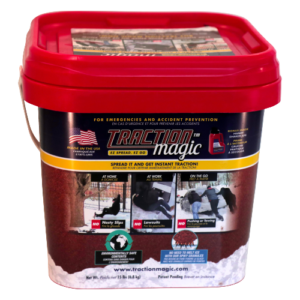
Safe Thaw
Imagine an ice melt you can put down and never worry about. It won’t harm pets, kids and your property. That’s Safe Thaw. Unlike anything else on the market, Safe Thaw can change how winter affects our planet.
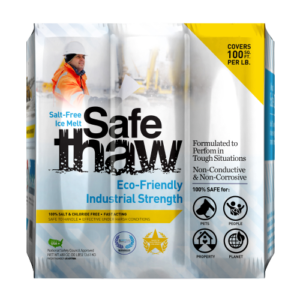
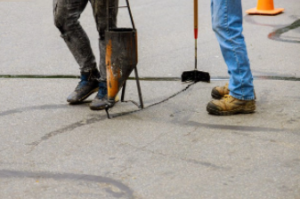
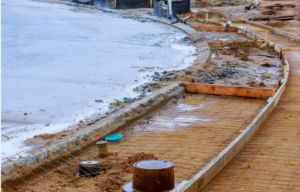
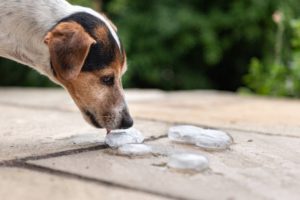
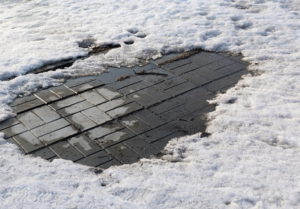
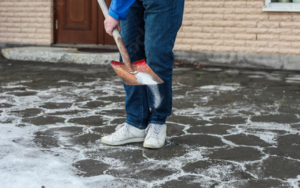

Comments
Post a Comment